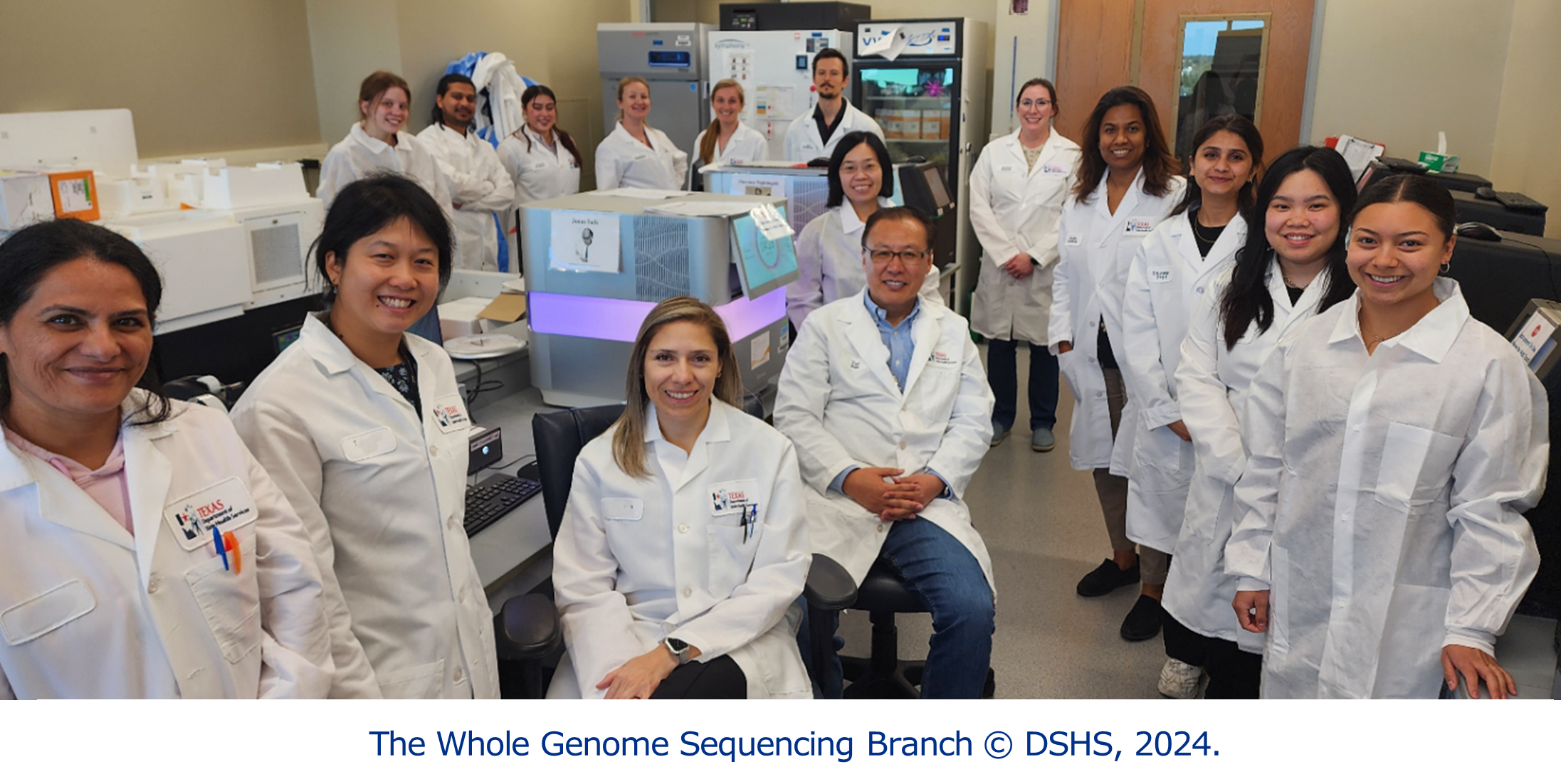Genetic Sequencing Branch
Genetic Sequencing Home | Genetic Sequencing at the DSHS Laboratory | Submitting Specimens for Sequencing | Genetic Sequencing FAQs | Genetic Sequencing Resources

What We Do
In 2023, the DSHS Laboratory’s Genetic Sequencing Branch expanded its next generation sequencing (NGS) capacity. The Branch can now prepare, analyze, and compare genetic data of foodborne and disease-causing pathogens isolated from specimens submitted to the Laboratory. A new dedicated sequencing space in the Laboratory, new instruments and automation enabled this increase in capacity.
The Genetic Sequencing Branch and the DSHS Bioinformatics team work closely together which allows most of the genomic analyses and data management to be done in-house. After sequencing is complete, the sequencing files are submitted to public databases for research and public health use.
The Genetic Sequencing Branch recently expanded into analyzing more viral and fungal specimens, including influenza and Candida auris. The group continues to take part in special research projects with the Centers for Disease Control and Prevention (CDC), the U.S. Food and Drug Administration (FDA) and Association of Public Health Laboratories (APHL).
The expanded Genetic Sequencing Branch is made up of two groups:
- Advanced Molecular Detection Team
- Microbial Genomics Team
The Advanced Molecular Detection (AMD) team conducts whole genome sequencing (WGS) of bacteria and Candida isolates associated with foodborne illness and healthcare-associated infections. Whole genome data is analyzed to identify serotypes, subtypes, mutations of interest, or toxin genes. The AMD team uploads these data to CDC’s national enteric database where they are accessible and shared for indications of disease clusters. The team also carries out phylogenetic analysis on the foodborne organisms to identify closely related samples involved in outbreak investigations.
The Microbial Genomics team conducts targeted and WGS of pathogens from clinical and environmental samples, including SARS-CoV-2, Mpox, Cyclospora, Influenza, and Mycobacterium tuberculosis. Wastewater sequencing surveillance for SARS-CoV-2 began in 2022 through an FDA pilot project and continues to grow as new water sampling sites and organisms of interest are identified. The team collaborates with DSHS epidemiologists and an academic partner for wastewater surveillance.
The Genetic Sequencing Branch laboratory also:
- confirms or completes the findings of other laboratories that lack the resources to conduct specialized procedures on isolates that are reportable to local, regional, and state health departments,
- recruits specimens from laboratories and universities,
- provides the required laboratory resources and works with epidemiologists to help identify variants of interest and track outbreaks (e.g., foodborne illnesses and hospital acquired infections), and
- sequences specimens submitted under Texas Administrative Code Chapter 97 (Texas Notifiable Conditions).
The goals of the Genetic Sequencing Branch include:
- using NGS for surveillance and identification of public health threats in human, food, and environmental samples,
- providing high quality and timely genomic data for outbreak investigations and public health responses, and
- expanding processing capacity to become a core sequencing lab for Texas.
How to Use This Guide
This information is provided for healthcare providers and clinical and reference laboratories who submit specimens to DSHS Austin Laboratory for testing.
Click on the menu item to quickly navigate to the section of interest.
Notices
Austin Laboratory Correspondence and Bulletins
Microbiological Sciences Branch Notices
How to Contact the Genetic Sequencing Branch
Advanced Molecular Detection Team or Microbial Genomics Team
Email: WGS.DSHS@dshs.texas.gov
Phone: 512-458-7582
Fax: 512-458-7452